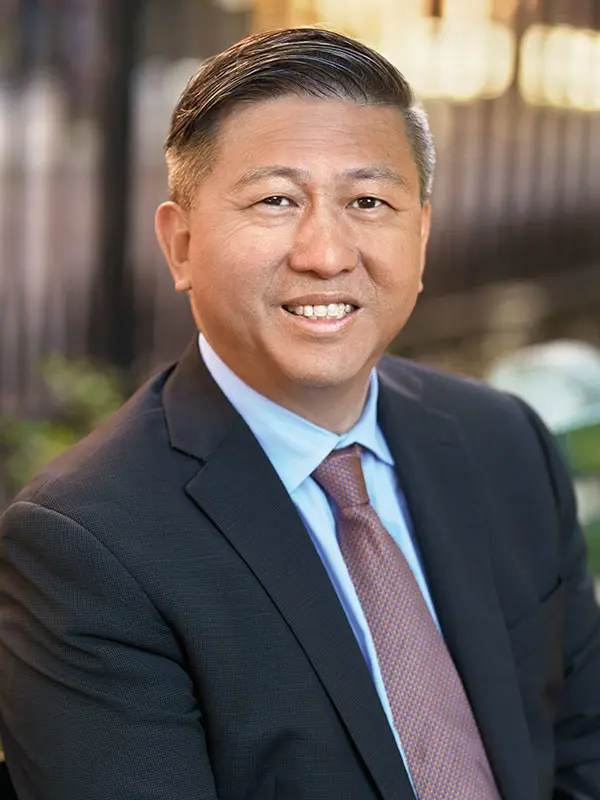A bold blueprint to transform New York Eye and Ear Infirmary of Mount Sinai (NYEE) into a model health care system more in tune than ever with the rapidly changing needs of patients, technology, the community, and its physicians continues to make significant strides, underscored by plans to open the state-of-the-art New York Eye and Ear of Mount Sinai Ambulatory Surgery Center (ASC) near Madison Square Park in Midtown Manhattan in the fall of 2023. An NYEE-branded joint venture facility, the new ASC reflects a partnership between NYEE, Mount Sinai Ambulatory Ventures (a subsidiary of Mount Sinai Health System), our community physicians, and Merritt Healthcare.
Like a host of other physical changes underway at NYEE, the ASC will bring the institution’s 200-year-old brand of ophthalmic excellence and the highest levels of quality care to a modern facility designed to handle the majority of surgical procedures we perform, in a way that’s most convenient and accommodating to both patients and surgeons.
“Our focus is on meaningful change to become more what state-of-the-art health care looks like—and where it’s headed—in the twenty-first century,” says James C. Tsai, MD, MBA, President of NYEE and Chair of Ophthalmology at the Icahn School of Medicine at Mount Sinai and the Mount Sinai Health System. “The new ASC is a critical part of that transformation by migrating many of our surgical procedures from the hospital to the community, and significantly enhancing the patient experience within a smaller and more intimate setting.”
Driving the industry-wide change is a constellation of factors impacting the delivery of patient care—factors that are requiring health care providers to rethink and reconfigure their traditional models. Among those influencers are site-neutral payments, the growing insurance-inspired movement to pay the same amount for a service or procedure whether it’s rendered in an ambulatory surgery center or a hospital. The COVID-19 pandemic also continues to impact the quality and character of health care, challenging providers to be more agile and creative in how they respond to health care disruptions. And NYEE’s own future is being shaped by the paramount importance the Mount Sinai Health System has assigned to serving entire populations and to health care equity as vehicles for ensuring that all individuals have access to the same quality of care.
Site-neutral payments, the COVID-19 pandemic, and health care equity concerns all influenced a plan.
While these new imperatives are consistent with our centuries-old mission, they mean planting even broader and deeper roots in the community. The ASC, to be located at Broadway and 25th Street, will be uniquely equipped to meet that goal. “In addition to modernizing our facilities, we know we have to make them more accessible and open to our patients by spreading our footprint beyond our downtown campus to sites across the city,” explains Dr. Tsai. “The ASC will be a centrally located, high-visibility site with a strong commitment to assembling a talented team of physicians, surgeons, nurses, anesthesiologists, and technicians—like those located in our main hospital downtown—who have earned a national reputation for their commitment to clinical excellence.”
Indeed, the evolving blueprint calls for co-locating NYEE’s large faculty practice of clinicians in the same building as the ASC. Under the same roof will also be the Shelley and Steven Einhorn Clinical Research Center at NYEE, the centerpiece of our institution’s cutting-edge research and clinical trials program. And at a nearby remodeled facility on Second Avenue and 22nd Street will be NYEE’s resident-staffed eye clinic, relocating from its longtime home at our 14th Street hospital campus. Sharing the new site will be the Jorge N. Buxton, MD, and Douglas F. Buxton, MD, Microsurgical Education Center, one of the largest and most advanced training labs in the country.
“Changes will certainly need to occur in how we’ve done things in the past, when our culture was centered on a single building.”
- Paul A. Sidoti, MD
Ensuring this expanding network of sites and services is tightly connected while maintaining unwavering quality will admittedly pose a challenge—but also an opportunity—for NYEE. “Changes will certainly need to occur in how we’ve done things in the past, when our culture was centered on a single building,” allows Paul A. Sidoti, MD, Chair, Ophthalmology, NYEE. “But that culture has continually challenged us to be creative in how we confront problems, and now is no different. Our rapidly growing use of technology, including telemedicine and teleconsults, will enable us to continue to perform as a closely knit organization where ideas, skills, and expertise are generously shared for the benefit of our patients and our physicians.”
Dr. Tsai echoes that thought. “What defines New York Eye and Ear is not a single building or way of thinking,” he declares. “Instead, it’s our rich history, our steadfast service to the community, and our remarkable faculty (both full-time and voluntary), physicians, trainees, and staff. Those strengths are enduring and will only multiply as we continue to grow our widely recognized brand across the metropolitan area.”
Featured

James C. Tsai, MD, MBA
President, New York Eye and Ear Infirmary of Mount Sinai

Paul A. Sidoti, MD
Chair of Ophthalmology, New York Eye and Ear Infirmary of Mount Sinai
